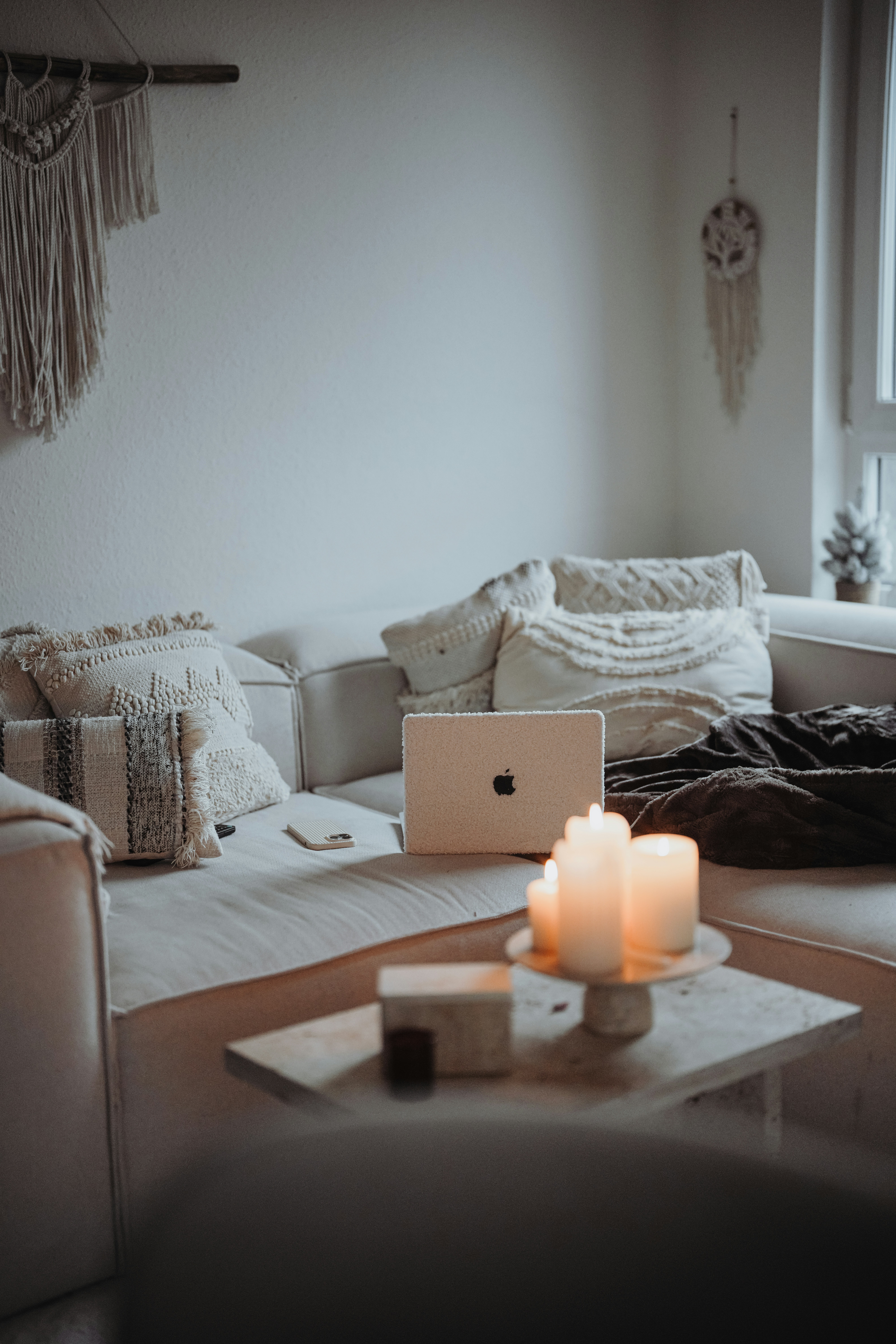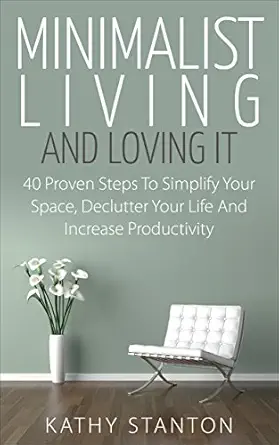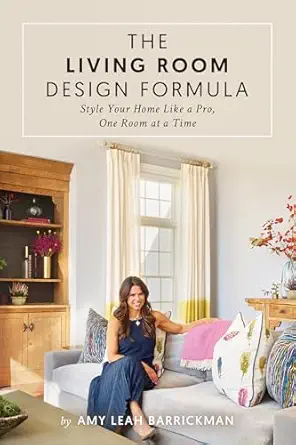

Introduction to Minimalism
Minimalism is a design philosophy that advocates for simplicity and intentionality in one’s living space. In recent years, it has gained popularity among individuals seeking to create a cozy and peaceful home environment. By focusing on the essentials and eliminating unnecessary items, minimalism helps foster a calming atmosphere that promotes mindfulness and well-being.
At its core, minimalism emphasizes functionality without sacrificing aesthetic appeal. Each item in a minimalist space serves a purpose, whether it is for daily use or aesthetic enjoyment. This intentionality not only reduces clutter but also enhances the overall flow of the space, ensuring that every corner is both practical and inviting. As a result, minimalist design often incorporates clean lines, neutral color palettes, and carefully chosen furnishings that align with one’s lifestyle.
In creating a cozy environment, the minimalist approach suggests that less is indeed more. By simplifying decor and focusing on quality rather than quantity, individuals create spaces that feel harmonious and tranquil. This approach allows for more freedom and flexibility in how a space is used, whether for relaxation, entertainment, or work. Furthermore, a minimalist home fosters a sense of clarity and calm, providing a refuge from the chaos often found in everyday life.
The elimination of clutter is critical in achieving a minimalist aesthetic. This does not only pertain to physical objects but also extends to visual complexity. By reducing distractions, minimalist design encourages a serene living environment that enhances mental clarity and peace of mind. Thus, adopting minimalism in home design is a strategic choice for anyone looking to create a cozy, functional, and harmonious space.
The Psychology of Cozy Spaces
Creating a cozy environment in an apartment extends far beyond aesthetic appeal; it significantly impacts our mental well-being. Cozy spaces are closely related to feelings of safety, comfort, and relaxation, which contribute to reducing stress levels. Research in environmental psychology suggests that well-designed interiors can enhance mood and promote a sense of calm, thereby improving overall quality of life.
One of the primary elements influencing the perception of coziness is color. Warm colors such as soft yellows, gentle reds, and muted oranges tend to evoke warmth and can make a space feel inviting. In contrast, cooler colors may impart a sense of spaciousness but often lack that same sense of warmth. Thus, incorporating warm color palettes into your apartment can create a nurturing environment that fosters comfort and relaxation.
Moreover, texture plays a critical role in enhancing the cozy factor of a space. Soft fabrics, such as plush throws and cushions, can add an inviting feel to the design, while natural materials like wood and stone create a connection to nature, contributing to a warm atmosphere. Layering different textures—such as a knitted blanket on a sleek sofa or a jute rug underfoot—can create visual interest and depth, making the space more soothing and less sterile.
Additionally, personal touches are crucial in crafting a cozy atmosphere. Integrating elements that reflect your personal experiences, such as family photos, cherished art pieces, or travel mementos, can imbue the space with warmth. These personal artifacts not only tell a story but also enhance emotional connection to the environment, promoting comfort and contentment.
Ultimately, understanding the psychology behind cozy spaces can enable individuals to create living areas that are not just visually appealing but also support mental health and overall well-being.
Choosing a Neutral Color Palette
When undertaking the design of a cozy and minimalist apartment, selecting a neutral color palette is a foundational step that significantly contributes to achieving the desired atmosphere. Neutral colors such as whites, beiges, and grays create a serene backdrop that enhances the minimalist vibe, allowing the space to breathe and feel spacious. These shades not only provide a calm environment but also promote versatility, making it easy to integrate various decor elements that reflect personal style.
One effective approach to using a neutral color palette is to focus on combining different shades within the same family. For instance, pairing a soft beige with a cooler gray can create depth and interest without straying from the overall minimalist aesthetic. Incorporating lighter shades on larger surfaces, such as walls and furniture, helps to amplify light and space, while darker hues can be reserved for smaller accent pieces, providing balance and contrast.
Adding subtle accents is essential when creating warmth in a minimalist apartment. Textural elements, such as a cozy throw blanket in a muted tone or a slightly patterned cushion, can introduce a sense of comfort without overwhelming the simplicity of the space. Wooden features, whether in furniture or flooring, also play a vital role in adding warmth. The natural tones of wood complement a neutral color palette beautifully and bring a touch of nature indoors, which enhances the overall ambiance.
Furthermore, incorporating greenery through plants can enliven the neutral color scheme, providing vibrant visual interest while maintaining serenity. By following these guidelines, selecting a neutral color palette not only enhances the minimalist vibe of your apartment but also ensures a warm and inviting atmosphere suited for relaxation and comfort.
Furniture Selection and Layout
When it comes to designing a cozy and minimalist apartment, the selection of furniture plays an essential role. The fundamental principle of minimalism is to simplify spaces while ensuring they remain functional and inviting. Choosing furniture that aligns with these principles can significantly enhance the comfort of your living area. Prioritizing multifunctional pieces is a practical approach in a minimalist setting, as it allows for a streamlined look without sacrificing utility. For example, a sofa bed can serve the dual purpose of a sleeping area for guests and a relaxing spot during the day, while nesting tables can provide additional surface space when needed.
Equally important is the emphasis on comfort when selecting furnishings. A minimalist approach does not equate to sacrificing coziness; rather, it facilitates a thoughtful selection of comfort-oriented pieces that harmonize with the space. Opt for soft textures and ergonomic designs to create a welcoming atmosphere. Material choices such as lightweight fabrics or warm woods can evoke warmth without overwhelming the senses. Considerations for seating arrangements should promote interactions, encouraging family and friends to gather and engage.
The layout of the furniture also holds significant weight in achieving a cohesive and cozy environment. Keep pathways clear and allow for a natural flow through the space to enhance accessibility. Arranging furniture in groupings can foster a sense of community, while open spaces can give an airy feel. Additionally, positioning furniture to encourage light and views can greatly enhance the ambiance. By thoughtfully selecting each piece and its placement, you can create a minimalist apartment that radiates comfort and style, allowing you to enjoy the space to its fullest potential.
Incorporating Textures and Layers
When designing a minimalist apartment, the addition of textures and layers is essential for creating an inviting atmosphere. A space that appears sparse may unintentionally evoke feelings of sterility. By thoughtfully incorporating various materials and textiles, warmth and depth can be achieved without compromising the minimalist ethos. For instance, introducing wood elements, whether through furniture or decorative accents, can lend a natural, organic feel. Light or medium-toned woods can enhance brightness, while darker woods can add richness.
Soft fabrics play a crucial role in providing comfort and warmth. Consider incorporating textiles such as cotton, linen, or wool in soft hues that complement the overall color scheme. These fabrics can be used in items like throws, cushions, and curtains, enhancing comfort while maintaining an uncluttered appearance. Layering these textiles is key; a plush area rug over a hardwood floor can anchor the space while also inviting people to feel at home.
In addition to traditional textiles, incorporating natural elements can add an organic touch that harmonizes well with minimalist decor. Indoor plants, for instance, introduce vibrant color and texture while promoting a sense of tranquility and connection to nature. Textured planters or baskets can further accentuate this natural aesthetic. Other natural materials such as stone or ceramic can be used in accessories, contributing to a balanced, layered look.
Lastly, when layering, aim for a variety of shapes and sizes. Mixing large and small cushions on a sofa or layering throws in differing textures can create visual interest without overwhelming the design. By carefully selecting and combining textures and layers, your minimalist apartment can be transformed into a warm and inviting haven.
Maximizing Natural Light
Natural light plays a crucial role in establishing a warm and inviting atmosphere within an apartment. By maximizing sunlight, homeowners can create spaces that feel more open, airy, and comfortable. One of the most effective ways to enhance natural light is through thoughtful window treatments. Opting for sheer curtains or blinds that can be fully retracted allows sunlight to flood into the room while still providing privacy when needed. Avoiding heavy fabric drapes can prevent light from reaching the interior, thereby diminishing the cozy ambiance one seeks to achieve.
In addition to window treatments, strategic furniture placement is another essential consideration. Arranging furniture in a way that does not obstruct pathways for light can significantly improve how sunlight enters a space. Positioning larger pieces away from windows creates a more seamless flow of light throughout the apartment. For example, placing a sofa or chair away from a window encourages better light distribution across the areas where individuals spend time and enhances overall feel.
The use of mirrors is also a valuable technique for maximizing natural light. Mirrors can reflect and amplify sunlight, making a space feel larger and more open. Placing a mirror opposite a window allows it to capture daylight and distribute it throughout the room, enhancing brightness without additional light sources. Moreover, decorative mirrors can serve as artistic elements, contributing further to the cozy and minimalist design ethos.
In summary, elevating natural light in one’s apartment requires a combination of appropriate window treatments, smart furniture arrangement, and the strategic use of mirrors. By implementing these tips, individuals can cultivate a warm, inviting environment that embodies both coziness and minimalism while making the most of the available natural light.
Personalizing Your Space
Personalization plays a significant role in transforming a minimalist apartment into a home that reflects your unique identity and lifestyle. While minimalism emphasizes simplicity and functionality, it does not necessitate a complete abandonment of personal touches. Instead, it encourages the thoughtful integration of meaningful items into your living space. This approach allows for the creation of a cozy atmosphere that feels both inviting and uncluttered.
One effective strategy for personalization is to select a few cherished items to display prominently. Whether it’s a piece of art, a sculpture, or a favorite book, these elements can serve as focal points that contribute to the overall aesthetic of your apartment. Choose items that resonate with you emotionally, as this connection will enhance the warmth of your space. However, it’s essential to be discerning in your choices; too many personal items can contradict minimalist principles and lead to clutter.
Another way to personalize your environment is through the intentional use of artwork and photographs. A carefully curated gallery wall featuring a selection of your favorite images or artworks can create a stunning visual impact without overwhelming the senses. Consider using frames that blend seamlessly with your decor, thus maintaining a harmonious look. You can also explore alternative display methods, like using a small easel for displaying seasonal art or photographs, which can be rotated regularly to keep the space dynamic.
In addition, integrating plants into your minimalist apartment adds a layer of personalization and natural beauty. Select low-maintenance varieties that thrive indoors, as they enhance aesthetics while promoting mental well-being. When arranged thoughtfully, plants not only breathe life into your space but also contribute to an overall sense of tranquility. Balancing these personal touches within the framework of minimalism ensures that your apartment remains serene, meaningful, and distinctly yours.
Greenery and Indoor Plants
Integrating greenery and indoor plants into a minimalist apartment can significantly enhance the overall ambiance while promoting a sense of tranquility. The presence of plants not only introduces vibrant life to a space but also aligns perfectly with minimalist design principles, which emphasize simplicity and functionality. By adding a touch of nature, you can create a serene environment that fosters relaxation and rejuvenation.
Some of the best indoor plants for minimalist apartments are those that require minimal care. Plants such as pothos, peace lilies, and snake plants are known for their hardy characteristics and aesthetic appeal. Pothos, with its trailing vines, can be placed in hanging pots or on shelves, creating an eye-catching visual display. Peace lilies are not only beautiful but also possess air-purifying properties, making them ideal for maintaining a healthy living space. Snake plants, known for their tall and structured leaves, can stand as sculptural elements that enhance your decor without overwhelming the space.
When arranging indoor plants within a minimalist apartment, consider a cohesive aesthetic that mirrors the overall design theme. Use simple, functional pots or planters made from materials like ceramic or concrete to maintain a clean look. Group plants of different heights to create layers, or place them on floating shelves to save floor space while adding dimension. Strategic placement of greenery near natural light sources can also enhance their growth and vitality, making your apartment feel more inviting.
By thoughtfully incorporating a selection of indoor plants, you can achieve a balance between minimalism and nature, creating a harmonious and peaceful living environment that welcomes both relaxation and rejuvenation.
Conclusion: Embracing Minimalism for a Cozy Home
As we reflect on the various approaches to creating a cozy and minimalist apartment, it becomes evident that minimalism is not merely a design choice; it embodies a lifestyle that prioritizes comfort, simplicity, and functionality. Throughout the blog post, we explored how decluttering your living space and selecting only essential and meaningful items can transform your home into a sanctuary that fosters relaxation and peace. This approach encourages individuals to step away from the chaos of excess, thereby inviting a sense of calm and creating an inviting atmosphere.
Incorporating minimalist principles also involves thoughtful planning of your space. By utilizing multifunctional furniture and optimizing storage solutions, one can maximize efficiency while maintaining a clean aesthetic. Throughout the various sections, we highlighted how careful color palettes and natural lighting play pivotal roles in enhancing the coziness of a minimalist home. Such elements not only contribute to visual harmony but also evoke feelings of tranquility, making the environment more conducive to relaxation.
Moreover, minimalism opens up opportunities for personalization without the burden of clutter. By focusing on a select few decor pieces that resonate personally, one can express individuality while still adhering to minimalist ideals. Encouraging readers to embrace these principles encourages them to curate their environments intentionally, leading to spaces that truly reflect their personalities and lifestyles.
In conclusion, adopting a minimalist lifestyle can significantly enhance the comfort and enjoyment of your living space. By embracing minimalism, you can create a warm and inviting home that nurtures well-being. We encourage everyone to take the first steps toward a more minimalist and cozy environment, ultimately fostering a space where peace and simplicity prevail.





